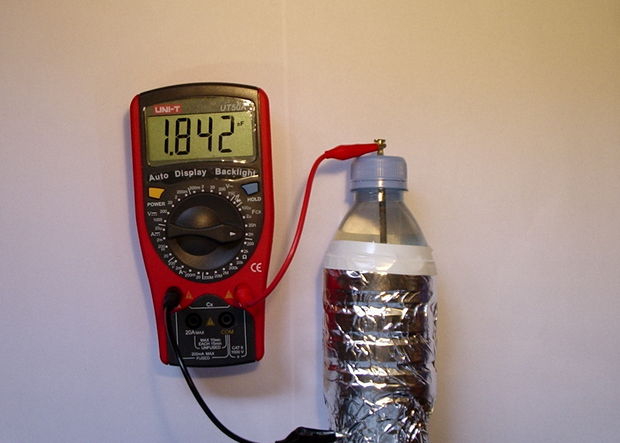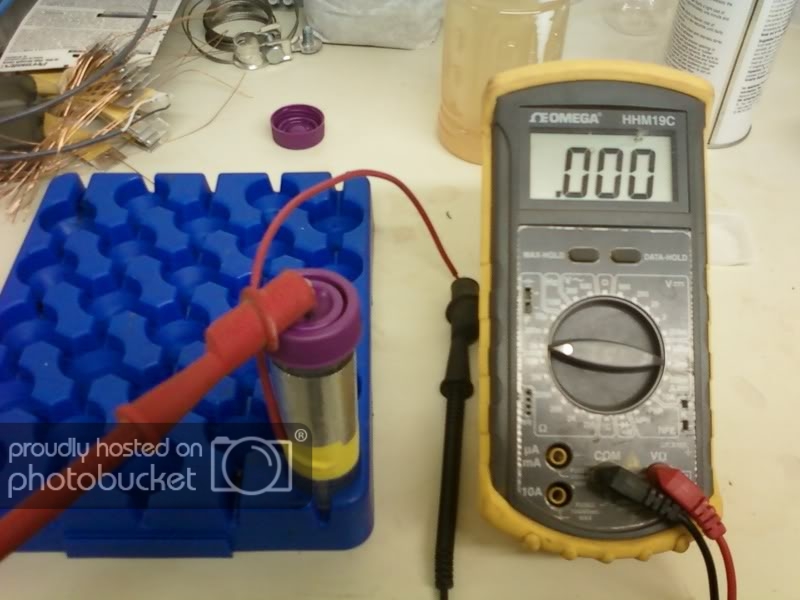Hello all,
I am researching Tesla ideas, which led me to salt water capacitors (SWC). I have built two out of a plastic drink bottle and two salts (KCl and NaCL), but I am not measuring any capacitance.
How do you measure the capacitance of a SWC with a multimeter, which has capacitance capability? The range on the MM is nano and micro Farads. Currently, I connect the two leads of the MM to each lead of the SWC, but I am not reading any capacitance, except when I walk up closely wearing my fleece jacket. Guess I'm the one generating the static electricity.
Also, I would love for the thread to become a list of past experience and current work with SWC's as I am not finding much in details.
My goal is to determine a model of capacitance based on salt type and maybe pH.
Thanks,
Aggie
I am researching Tesla ideas, which led me to salt water capacitors (SWC). I have built two out of a plastic drink bottle and two salts (KCl and NaCL), but I am not measuring any capacitance.
How do you measure the capacitance of a SWC with a multimeter, which has capacitance capability? The range on the MM is nano and micro Farads. Currently, I connect the two leads of the MM to each lead of the SWC, but I am not reading any capacitance, except when I walk up closely wearing my fleece jacket. Guess I'm the one generating the static electricity.
Also, I would love for the thread to become a list of past experience and current work with SWC's as I am not finding much in details.
My goal is to determine a model of capacitance based on salt type and maybe pH.
Thanks,
Aggie



